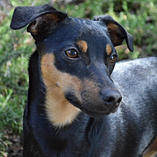Three fabulous examples of
Dry Creek Valley Sauvignon Blanc were tasted, talked about and tweeted up during a virtual wine tasting event. The crowd gathered around a Google Hangout video broadcast on YouTube, while Twitter tasters tweeted about the trio 'til their thumbs tired. Here is the video of the tasting, as it appeared on
YouTube.
Michelle McCue of
McCue Communications moderated the vidcast and led those responsible for the wines in a power hour of lively conversation about what makes Dry Creek Valley good for Sauvignon Blanc. Winemakers
Ed Sbragia,
Emmett Reed and
Tim Bell provided the answers to questions asked by the social media participants. The Twitter event is hashtagged at
#DCVSauvBlanc.
Comments were positive from the beginning, with
@PalateXPosure commenting on the Sauvignon Blanc wines that were the topic of the event, “the three clearly elevate what can be achieved w/SB.”
@KatieEigel agreed that “These wines were all fantastic!”
@wineandgoodfood tweeted that there is more than freshness to the variety, typing “A well-made Sauvignon Blanc can indeed age well!”
@martindredmond loves SB “because it is the answer to many food pairing challenges like asparagus. Getting hungry! Anyone else like Sauv Blanc with guacamole?” He must have been starving, as he also turned his thoughts to “raw oysters, scallops and crab!”
Sbragia Home Ranch Sauvignon Blanc 2014 Dry Creek Valley, Sonoma County
The Sbragia estate 13-acre Home Ranch Vineyard was planted in 1995, so the Sauv Blanc vines are now really coming into their own. The grapes - all Sauvignon Blanc - were picked nine days into September. They are typically the first of the season to be harvested and made into wine at Sbragia, so the Sauvignon Blanc really sets the tone for everything else they do.
This white is 100% stainless steel fermented, hits 13.7% abv and retails for $22. Only 200 cases were produced.
This wine has a lovely golden tint - it looks inviting. A whiff shows a beautiful grassy note - a little more than I expect in California Sauvignon Blanc, but not full-bore grassiness like the New Zealand style. Apples and pineapples follow quickly. The palate displays gorgeous green apple, a twist of lemon-lime and a quarry of minerality. Ripping acidity screams for shellfish or crustaceans.
@foodwinechickie noted the price: “Such a great value at $22/bottle.” She also liked the “citrus notes with hints of grassiness” in the wine.
@amylieberfarb agreed with me that “Oysters would be perfect” for this one. Amy also liked the “tropical fruit on nose & palate.”
@JamesTheWineGuy wrote of the wine’s “orange/golden citrus zest, hint of ginger, flowers & seashells.” From
@PalateXPosure: “I may have found my top summer #wine MUST HAVE. STUNNING effort. Can't believe only 200 cases made. Can I have them all?”
@WineCompass sang the praise of the “lemon-honeysuckle aroma, creamy middle & acids galore,” while
@martindredmond enjoyed the “wonderful acid w/ lovely grapefruit, passionfruit and lemongrass character.”
Gustafson Estate Sauvignon Blanc 2013 Sonoma County, Dry Creek Valley
Harvested on September 10th from Gustafson’s Old Sheep Barn Block, these grapes are a field blend of 80% Sauvignon Blanc and 20% Sauvignon Musque. The wine was fermented in stainless steel and aged in French oak, one-fifth of it new. 350 cases were produced and alcohol clicks in at 14.1% abv. The retail price is $22.
Gustafson cites the 2013 vintage as a good one overall in California, but particularly good for them in Dry Creek Valley. The long, dry and mild season meant less water for the vines, but they say the Sheep Barn Block produced “unprecedented growth despite the lack of water.”
They harvested the Sauvignon Blanc during the first week of September and did whole-cluster pressing of the grapes to include the stems and all.Steel fermentation was followed by French oak aging, then finished again in steel.
The yellow-gold tint is cheery and bright, while the nose is a bit funky, with white peaches and a waxy sensation. That wax carries onto the palate and meets a savory note on arrival. The acidity is superb and the finish lingers long with stone fruit the last to leave.
@JamesTheWineGuy liked the Gustafson’s “Comice Pear, Adriatic fig, hint of cinnamon and cashew.”
@martindredmond was “Digging the stonefruit, tropical, melon grassy character. Great texture too!”
@dallaswinechick checked in with, “Green melon, peach, nice acidity and a touch creamy.”
@winecompass said, “Not your typical Sauvignon Blanc, floral and spicy.”
Dry Creek Vineyard 2013 DCV3 estate Sauvignon Blanc Sonoma County, Dry Creek Valley
From Dry Creek Vineyard’s single-vineyard series, the 2013 DCV3 Estate Sauvignon Blanc uses Sauvignon Musqué grapes that were picked starting in late August. DCV3, they say, is the original Sauvignon Blanc vineyard in Dry Creek Valley. Alcohol is ripe at 14.1% abv and 417 cases were made. The bottles sell for $25.
Pale color matches the delicate nose in this wine, with minerals and citrus wonderfully underplayed. On the palate, minerality rides herd over peaches and apples. Very pronounced acidity makes a wonderful food pair, while a medium-full mouth has decent weight. Meyer lemon graces the finish with a zing.
@JamesTheWineGuy tasted “Meyer lemon pulp, moist stones, white flowers, sunflower seeds,” while
@foodwinechickie loved the wine’s “great acidity, refreshing finish,” and “Freshly-cut grass and bright citrus flavors. Medium bodied and not very California-like.”
@PalateXPosure got “gorgeous citrus,lemon blossom,exotic fruit,” while
@martindredmond called the wine “aromatic with a stone fruit, citrus & pineapple character. Nice minerality. Gorgeous texture.”
@amylieberfarb commented, “Citrus, creamy w/ spice on long finish.”
@DallasWineChick tweeted, “bursting with melon, tropical fruit and citrus with a minerality. A great food pairing wine.”
Follow Randy Fuller on Twitter





